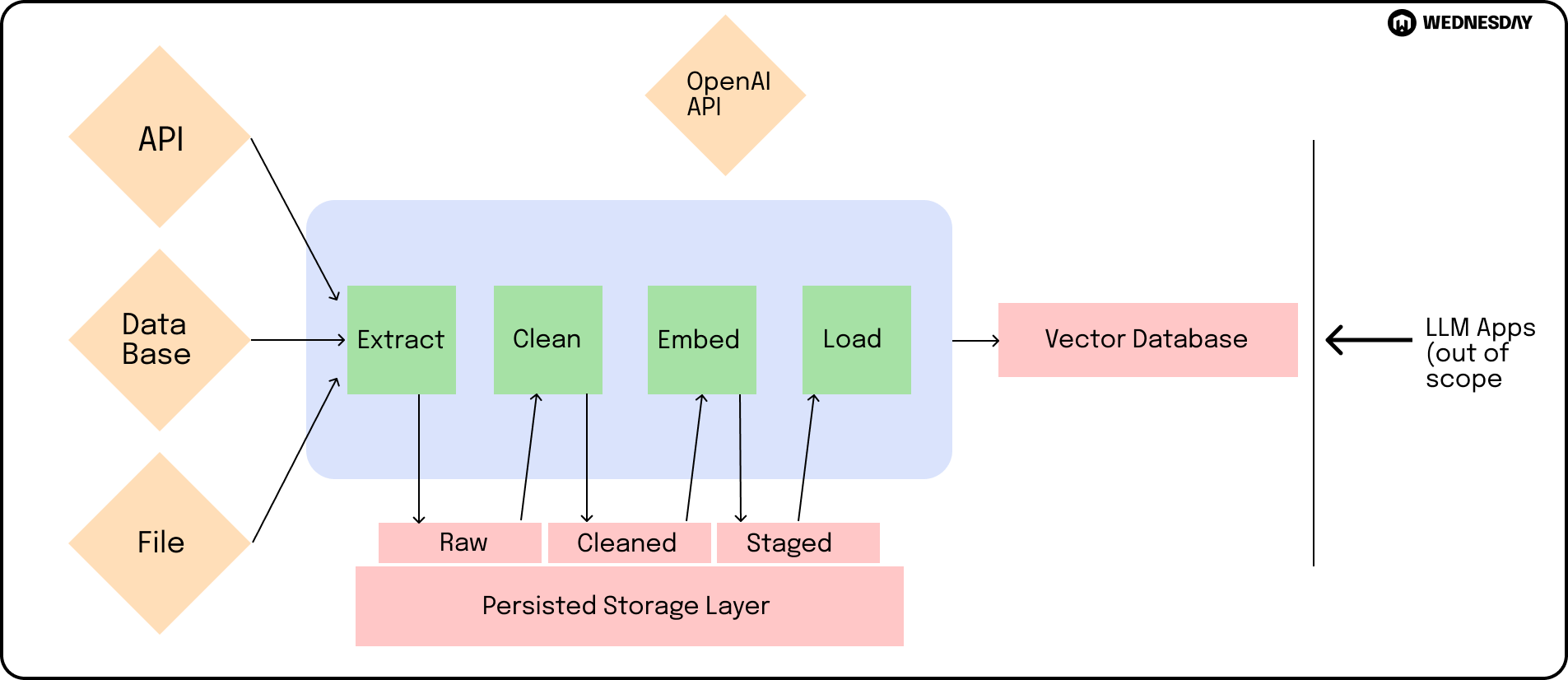In recent years, the rise of LLMs (Language Model Models) has undoubtedly left a significant mark on the technology industry. These powerful models, fueled by artificial intelligence, have become the center of attention across various sectors. From natural language processing to content generation, LLMs have raised numerous questions about their future and potential impact.
I have read articles from business leaders, product leaders, data scientists & more. I haven't read much about LLM's from a data engineer. Here is my perspective on this.
The Future of LLMs: Here to Stay or Passing Trend?
As with any emerging technology, it's only natural to question the longevity of LLMs in the ever-evolving tech industry. Critics argue that LLMs might simply be a passing trend, while enthusiasts believe they are here to stay. To gauge the future of LLMs, it's crucial to consider their impact on different industries and address concerns surrounding their integration into our daily lives.
Examining the Longevity of LLMs in the Tech Industry
The tech industry thrives on innovation and adaptability. It's no surprise that LLMs have found their way into various tech-centric domains. From customer service chatbots to virtual assistants, LLMs are revolutionizing the way we interact with technology. Their ability to understand and respond to natural language prompts has opened up new avenues for developers and businesses alike.
However, LLMs are not immune to criticism. One concern is the potential bias these models might possess. As they learn from vast amounts of data, biases embedded within that data can inadvertently influence the outputs of LLMs. Ensuring fairness and inclusivity when training these models poses a challenge that needs to be addressed for their continued success.
The Potential Impact of LLMs on Various Industries
While the tech industry has been quick to adopt LLMs, their potential impact extends beyond this realm. LLMs have started making their way into healthcare, finance, and marketing, among others. The ability to process vast amounts of data and generate human-like responses opens up new possibilities for these industries.
In healthcare, LLMs can aid in medical research and assist doctors in diagnosing and treating patients. Their vast knowledge base and language fluency allow them to process medical literature and provide evidence-based recommendations. However, concerns regarding privacy and the ethical implications of relying solely on AI solutions need to be thoroughly analyzed.
The finance sector also stands to benefit from LLMs. These models can analyze market trends, predict stock prices, and even assist in risk assessment. The potential time-saving benefits and improved decision-making processes make LLM integration an exciting prospect for financial institutions.
In the realm of marketing, LLMs can assist companies in generating quality content and personalized advertisements. Their language generation capabilities can help businesses better engage with their target audience while maintaining a consistent brand voice. However, striking the right balance between human-generated and AI-generated content is crucial for maintaining authenticity and building trust.
Debunking the Fear: LLMs and the Future of Humanity
While the rapid advancement of LLMs is undoubtedly impressive, it has also sparked fear and skepticism. Some argue that the rise of AI-powered language models could lead to job displacement and a decline in human creativity. However, proponents of LLMs argue that their primary purpose is to assist and augment human capabilities rather than replace them entirely.
It is crucial to understand that LLMs, despite their sophistication, lack fundamental human experiences and emotions. Genuine human connection, creative problem-solving, and ethical decision-making remain integral parts of our lives that LLMs cannot fully replicate. Instead of fearing the rise of LLMs, it is essential to embrace their potential and leverage them to complement human expertise.
Looking ahead, the future of LLMs holds immense promise. As technology continues to advance, LLMs will likely become even more sophisticated, capable of understanding context and generating responses that are virtually indistinguishable from human interaction. This opens up exciting possibilities for industries such as education, law, and journalism, where LLMs can assist in research, analysis, and content creation.
However, as we move forward, it is crucial to address the ethical considerations surrounding LLMs. Transparency in how these models are trained and the data they learn from is essential to ensure fairness and minimize biases. Additionally, regulations and guidelines need to be established to govern the use of LLMs, protecting privacy and preventing misuse.
Harnessing the Power of LLMs in Data Engineering
Data engineering, a field focused on collecting, organizing, and processing data, is experiencing a significant transformation with the advent of LLMs. These models provide data engineers with powerful tools to analyze and interpret data, ultimately leading to more efficient and informed decision-making processes.

Practical Applications of LLMs in Data Engineering
LLMs can be utilized in various ways within the realm of data engineering. From data cleaning and preprocessing to anomaly detection and predictive analytics, the potential applications are vast. Data engineers can leverage these models to automate repetitive tasks, freeing up time for more complex problem-solving and strategic planning.
One practical application of LLMs in data engineering is their ability to generate synthetic data. This synthetic data can be used for testing and validation purposes, ensuring that algorithms and models perform optimally. Leveraging LLMs in this context enables data engineers to save time and resources while maintaining the integrity of their data-driven systems.
Another fascinating application of LLMs in data engineering is their potential to assist in data integration and fusion. With the ability to understand and interpret multiple data sources, LLMs can help data engineers merge diverse datasets seamlessly. This capability opens up new possibilities for cross-domain analysis and enables organizations to gain comprehensive insights from disparate data sources.
Optimizing Data Engineering with LLMs
LLMs offer data engineers the opportunity to optimize their workflows and enhance the efficiency of their data pipelines. By automating certain tasks, such as feature selection or data transformation, LLMs enable data engineers to focus on higher-level data analysis and extract meaningful insights faster.
Furthermore, LLMs can be instrumental in addressing data quality issues. With their ability to understand context and semantics, these models can help identify and rectify data inconsistencies, outliers, and missing values. This not only improves the overall quality of the data but also enhances the reliability of subsequent analyses and decision-making processes.
However, integrating LLMs into data engineering pipelines does come with its challenges. Fine-tuning models, addressing potential biases, and ensuring the privacy of sensitive data are critical aspects that need to be carefully considered. Striking the right balance between automation and human intervention is key to unleashing the full potential of LLMs in data engineering.
Where to go from here?
LLMs are here to stay. As companies like Amazon, Google, and the rest incorporate these models in products that we use daily, these technologies will be ubiquitous.
One area that I'm very excited about is the use of an LLM with unstructured data. With the right prompts and code, you can do some serious data engineering work.
As always, if you're looking for help with any any data engineering objectives please book a free consult here.
Enjoyed the article? Join the ranks of elite C Execs who are already benefiting from LeadReads. Joins here.






